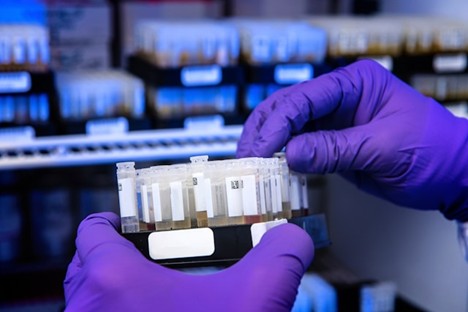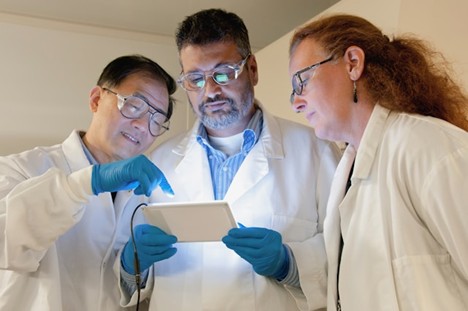
The laboratories of tomorrow are being built today - not just through state-of-the-art equipment and advanced AI systems, but by recruiting the brilliant minds that will lead the next generation of scientific discovery. For organizations in biotechnology, pharmaceuticals, diagnostics, and emerging tech, long-term success hinges on one crucial factor: the ability to strategically recruit and retain exceptional scientific talent.
As we move beyond a period of disrupted research timelines, pandemic-related shifts, and reduced public-sector funding, a rare and valuable opportunity has emerged. An influx of highly skilled researchers, many from academia and government institutions, is now available and ready to transition into the private sector. At the same time, private industry is accelerating R&D investments, making now the ideal time to act.
Forward-thinking companies are increasingly partnering with clinical research staffing agencies to tap into this unprecedented talent pool. These specialized agencies not only identify qualified candidates but also ensure a seamless cultural and operational fit, helping organizations build strong, adaptable teams positioned to lead in discovery and innovation.
Here’s why the organizations that act now to build tomorrow’s lab won’t just gain a competitive edge; they’ll play a pivotal role in shaping the scientific breakthroughs of the future.
Historically, much of the world’s research muscle has been housed in government labs, universities, and nonprofit institutes. But rising fiscal constraints, hiring freezes, and uncertainty around research grants - particularly in the U.S. with institutions like the NIH and CDC - have led many brilliant scientists to reconsider their career paths.
Talented researchers from academia and government labs are increasingly entering the private sector, where they see greater career flexibility, improved compensation, and more direct pathways to impact.
At the same time, biotech and pharma companies that once struggled to pull seasoned academics into industry roles are now finding a more receptive audience, especially among early- to mid-career scientists who have faced funding instability.
Scientists today are more eager than ever to work on projects that translate directly into patient care, global health solutions, or disruptive technologies. This desire for real-world impact is drawing them to industry roles that offer proximity to commercialization and the end user.
In this moment, companies willing to provide robust R&D platforms, mission-driven work, and scientific freedom can access a level of talent that was once out of reach.
In industries where innovation cycles are long, the returns on R&D are not always immediate. But history shows that strategic investments in science yield exponential long-term rewards.
Organizations with strong R&D pipelines are consistently more resilient and profitable in the long run. They’re better positioned to adapt to regulatory changes, market shifts, and technological disruptions. They create not just new products but entire platforms, patents, and new markets.
This resilience is built by people, not machines. Hiring now, when exceptional researchers are available, allows organizations to deepen their institutional knowledge, develop future leaders, and build the intellectual infrastructure for a decade of innovation.
AI, machine learning, and lab automation are transforming the speed and scale of R&D. But these tools are only as powerful as the scientists who deploy them. Data interpretation, hypothesis generation, and the design of meaningful experiments all depend on human judgment.
By recruiting those with data fluency and interdisciplinary backgrounds, companies can maximize the ROI of digital transformation efforts.
Recruitment is not just about filling vacancies - it’s about building a future-ready workforce. With significant demographic and educational shifts underway, the time to invest is now.

Many senior scientists in academic and government roles are retiring, leaving behind a wealth of institutional knowledge and mentorship gaps. Simultaneously, a large cohort of PhDs and postdocs trained in the last decade - many of them globally mobile - are eager to transition into industry roles where their skills will be applied faster and more visibly.
Forward-thinking companies are seizing the chance to recruit this next generation of innovators while also capturing institutional wisdom from seasoned researchers seeking new challenges outside of academia.
The pandemic normalized remote and hybrid work in research environments, allowing companies to tap into scientific talent far beyond traditional hubs. Whether it’s computational biologists in Europe, bioengineers in India, or synthetic chemists in South America, the scientific labor pool is now broader and more accessible than ever.
Organizations that prioritize flexible work models, international collaborations, and inclusive hiring can draw from a richer, more diverse set of minds - and reap the innovation dividends that come with it.
While the opportunity is great, so is the risk of complacency. Companies that delay investment in scientific talent may find themselves outpaced by more agile competitors.
Delays in hiring or underfunding research initiatives can slow product development cycles and erode market advantage. In fields like oncology, neurology, or personalized medicine, speed is everything. Without the right people in place to pursue regulatory submissions, optimize formulations, or run pivotal trials, companies risk falling behind.
The global competition for scientists is heating up. From big tech firms entering biotech to new startups flush with venture capital, the demand for researchers has created a seller’s market. Waiting too long may mean losing top candidates to more aggressive recruiters or organizations offering better development paths.
To build the lab of tomorrow, organizations must do more than post job openings - they must rethink their entire approach to scientific recruitment and retention.
Top scientists are drawn to purpose. Be explicit about the long-term scientific vision and the kind of impact the organization hopes to make. Whether it’s eradicating rare diseases, revolutionizing diagnostics, or building bio-based manufacturing platforms, let candidates see the bigger picture.
Give scientists the tools they need to do their best work - state-of-the-art lab equipment, high-throughput screening, robust bioinformatics platforms, or open access to data. Pairing the right minds with the right tools accelerates innovation and attracts top talent.
Talented researchers want room to explore ideas, take calculated risks, and grow into leadership roles. Create clear pathways for professional growth, support publications and conference presentations, and encourage exploratory research alongside core projects.
Break down silos and promote interdisciplinary collaboration. The problems worth solving - like Alzheimer’s, antimicrobial resistance, or climate-driven disease - require teams of biologists, data scientists, chemists, and clinicians working together. Make your organization a magnet for collaborative minds.
We are standing at a pivotal moment in the history of science-driven innovation. The convergence of global talent availability, public-sector disinvestment, and technological acceleration has created a once-in-a-generation chance to redefine what the lab of the future looks like.
For organizations in pharma, biotech, and beyond, now is not the time for caution. Now is the time to invest boldly in the people who will shape the next 10, 20, or 50 years of discovery.
Because tomorrow’s breakthrough begins with today’s hire.